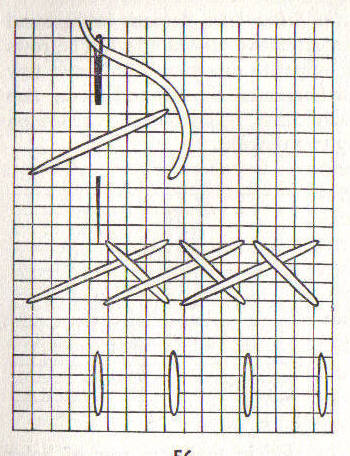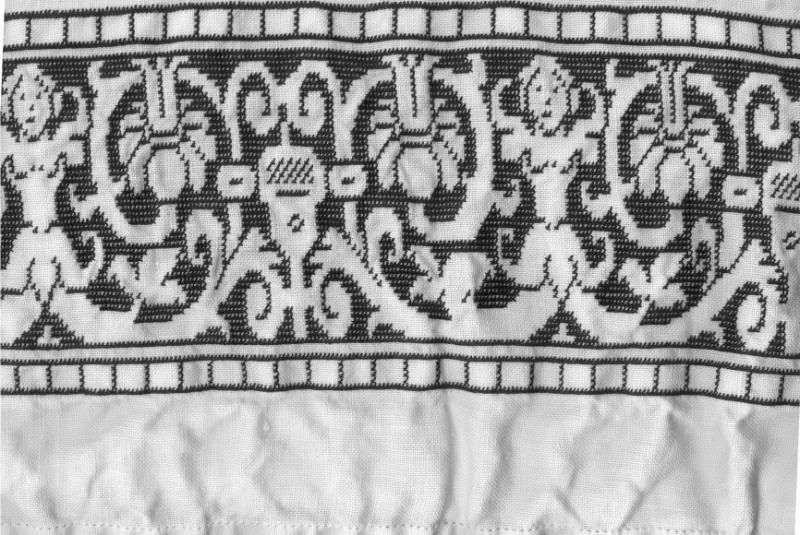Assisi Embroidery

This is one of the many counted thread type of techniques, where the pattern is not drawn on the fabric, but counted and stitched from a graphed chart. Unlike cross stitch, however, instead of the design being stitched, the background is stitched, leaving the actual “picture” part blank.
Traditional Voided Work
Prior to the 20th Century, this technique was stitched using primarily long armed cross stitch, Italian cross stitch and rice stitch

Italian Cross

Long armed Cross

Rice Sttich
The style of embroidery was used extensively in ecclesiastical embroidery in the 13th and 14th centuries in Italy, as well as in the 15th and 16th centuries in Spain (where it was called “Reserva”).
As with many techniques, it began to make its way into secular use and early examples of this can be found in the 16th century in Italy.
Although a monochromatic form, embroiderers used many different colours for their stitching, red and green being the most popular aside from black. Double running stitch (or back stitch) was used to provide some details of the design, and was often used to actually outline the design itself – much in the same way that it is used in modern cross stitch.
Modern Assisi Work
Today, embroiderers doing Assisi work have let their imaginations run riot! Although straight cross stitch is the most common stitch used, colours used range from delicate pastels to bright primaries. This is, in part, due to the wide range of colours now available to us.
Some stitchers take it a step further and use different weights of thread to give texture to their pieces, sometimes creating a design not only in the voided areas, but also within the stitching itself.
Many stitchers have chosen to use aida cloth for their Assisi work, however, I would urge you to use instead evenweave or linen. It has a better texture than aida, and will give your finished embroidery a better look.
The picture below is a piece I stitched several years ago as part of the Worshipful Broiderers of Lochac (an embroidery guild within the Society for Creative Anachronism, of which I am a member).
It is stitched using two strands of black DMC cotton on 32 count linen. The pattern is from the “Schon Neues Modelbuch” from 1597 by Johannes Sibmacher.

Recommended Reading
Assisi Embroidery: Technique and 42 Charted Designs (Dover Needlework)
Assisi Embroidery (Book Number 518)
Modern Assisi Cross Stitch
Links
Voided Work page at Larsdatter
Stalking the Wild Assisi by Baroness Kathryn Goodwyn
Voided Work at Clare’s Historical Embroidery page
Is there anything that you would particularly like to see an article on? If so, please contact me with your suggestions.
Happy Stitching

© 2012 Megan McConnell
This site needs an editor - click to learn more!
You Should Also Read:
Cross Stitch - the Stitch that became a Technique
Related Articles
Editor's Picks Articles
Top Ten Articles
Previous Features
Site Map
Content copyright © 2023 by Megan McConnell. All rights reserved.
This content was written by Megan McConnell. If you wish to use this content in any manner, you need written permission. Contact
BellaOnline Administration
for details.


